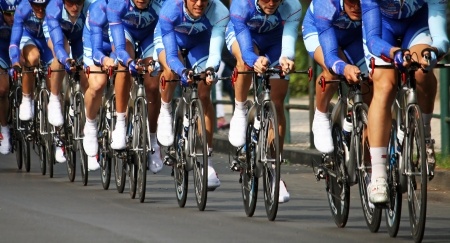Is Florida Becoming More Bicycle Friendly?
March 4, 2016 | Category: Bike Accidents | ShareRepresentative Kathleen Pasidomo of Naples hopes so. She was the chief sponsor of House Bill 253 to increase protection of bicyclists and pedestrians in Florida. The bill was unanimously endorsed by the Florida House Committee on Thursday, February 18, 2016. It still needs to be reconciled and passed by the full House of Representatives.
Some of the new provisions of the bill, which the Fort Myers News Press reported, includes:
- Motor vehicle operators yielding the right-of-way to cyclists when making right turns that cross sidewalks and bicycle lanes.
- Motorists being permitted to cross double yellow median lines in order to provide the required three feet of space when passing cyclists.
 There were some provisions in the original bill that were removed in order to get the bill approved. These provisions included an increase in motorist fines when a bicyclist was injured, and the requirement that motorists allow groups of four-to-ten cyclists to pass through an intersection before proceeding into the intersection.
There were some provisions in the original bill that were removed in order to get the bill approved. These provisions included an increase in motorist fines when a bicyclist was injured, and the requirement that motorists allow groups of four-to-ten cyclists to pass through an intersection before proceeding into the intersection.
In the past, Florida has consistently ranked high in the “most lethal states for cyclists” category according to the National Highway Traffic Safety Administration.
In 2013 the Florida Pedestrian and Bicycle Strategic Safety Plan was issued. This plan was developed to tackle the issue of cyclist safety through using the solution of the three E’s: engineering, education and enforcement.
Part of the 2013 Florida plan included the widening of bike lanes on state roads. The width was expanded from four to seven feet in order to give cyclists room when travelling side-by-side with motor vehicles. Florida feels that the widening can be done with little cost on existing roads by reducing vehicle lanes in some cases from12 feet wide to 11 feet wide and repaving.
In August 2015 The Tampa Tribune reported that the longer-range solution may include a complete street policy. This solution would include building “roadways to match the context of their location.” In other words, in busier areas the vehicle lanes would be narrower and the speed limit lowered.
Re-engineering the infrastructure can take time and be difficult. While waiting, drivers should consider adopting the following Edmunds.com rules when driving where bicyclists may be present:
- Appreciate Bicyclist Vulnerability: A car weighs 2 tons or so, while the average bike is a mere 20 pounds. In any collision, any physical interaction between car and bike, the bike always loses.
- Know Bicyclists' Rights: Drivers sometimes have little idea of the traffic laws that apply to bicyclists.
- Adjust That Attitude: Motorists tend to think of cyclists as ''in their way." Think of them as equals.
- Consider the Benefits of Bicycling — for Drivers: One cyclist on the road is one less car. Cyclists do not wear out the road, do not add to traffic congestion, and do not pollute.
- Spare Them the Right Hook: Intersections are venues for serious car-cycle collisions. Drivers making right turns, especially, should watch out for cyclists.
- Beware of the Left Turn: A driver trying to make a left turn sees an oncoming bicyclist, but the driver figures he has plenty of time to complete the turn. Exercise the same caution as you would for an approaching vehicle.
- Give Cyclists 3 Feet of Clearance: More than 20 states have passed laws requiring motorists to give bicycles on the roadway about 3 feet of space. The 3-foot rule helps drivers by giving them a concrete frame of reference.
- Look Before You Exit Your Car: Cyclists are terrified of being "doored." (The door zone is the space in which a cyclist is in danger of getting hit by a car door. It varies depending upon the model of car one is riding by. It can be almost zero when riding by a vehicle with gull-wing doors [doors hinged at the roof, not the side] or much larger if one is riding by a truck. Imagine a rider pedaling along next to a row of parked cars. Suddenly, a driver flings the door open. The impact can send the cyclist flying, and riders have died when they have been thrown into traffic. Before opening the door, look out the side-view mirror on the driver’s side, and be sure no one is approaching.
“Making Florida a bicycle-friendly state should be our goal. Should you or a loved one be injured in a bicycle and/or motor vehicle accident, call the expert team at Spivey Law Firm, Personal Injury Attorneys, P.A.,” said Fort Myers Bicycle Accident Attorney, Randall Spivey.
Fort Myers Bicycle Accident Attorney, Randall L. Spivey is a Board Certified Trial Attorney – the highest recognition for competence bestowed by the Florida Bar and a distinction earned by just one (1%) percent of Florida attorneys. He has handled over 2,000 personal injury and wrongful death cases throughout Florida. For a free and confidential consultation to discuss your legal rights, contact the Spivey Law Firm, Personal Injury Attorneys, P.A., in Lee County at 239.337.7483 or toll free at 1.888.477.4839,or by email to Randall@SpiveyLaw.com. Visit SpiveyLaw.com for more information. You can contact Spivey Law Firm, Personal Injury Attorneys, P.A.in Charlotte County at 941.764.7748 and in Collier County 239.793.7748.

